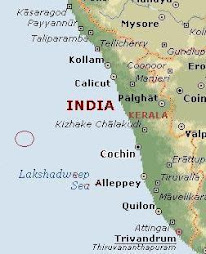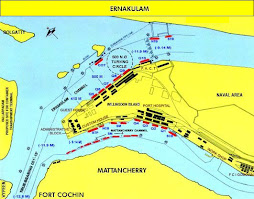V.M. Syam Kumar LL.M. (Maritime Law)
[Faculty Member for Maritime law, National University for Advanced Legal Studies, Cochin]
Within what time period should a suit be filed before a court of law in India towards enforcing a claim arising out of a contract for carriage of goods by sea?
The time period within which a suit is to be filed before a court of law is generally termed as the ‘Limitation period’. (‘Limitation period’ is to be contrasted from ‘Limitation of Liability’ under maritime law, which is a totally different concept that entitles the ship owner to limit his liability to a specified extent.)
‘Limitation period’ assumes importance because if the said time period is exceeded, the claimant looses his legal right to initiate an action against the defendant based on that claim.
The concept of limitation has been criticized as “an infamous power created by positive law to decrease litigation and encourage dishonest defenses”. But this is not appear to be a sound criticism. The doctrine of Limitation is founded on considerations of public policy and expediency. The object of limitation is to compel litigants to be diligent in seeking remedies in courts of law prohibiting stale claims. In commercial dealings it is highly necessary that matters of title and rights in general should not be in a state of constant uncertainty, doubt and suspense. Interests of commerce require that a period should be put to litigation. Long dormant claims have often more of cruelty than of justice in them.
In India the legal provisions pertaining to the limitation period with respect to claims arising out of contracts of affreightment are found in the Indian Carriage of Goods by Sea Act, 1925 (in short the COGSA). The COGSA substantially follows the provisions of the International Convention for the Unification of certain rules relating to Bills of Lading signed at Brussels in 1924 (commonly known as the Hague Rules). The Hague Rules were amended by two protocols in 1968 and 1979 (commonly known as the Hague-Visby Rules). Though at the international level further developments like the Hamburg Rules were evolved, the Indian law retained the Hague Rules as the norms governing the carriage of goods by sea. Finally in the year 1993 the Indian COGSA was amended by to give effect to the Hague-Visby Rules.
The Indian COGSA as amended by Act 28 of 1993 in Article III Clause 6 lays down the limitation period within which a claim is to be raised and a suit is to be filed for enforcing the claim. The said provision reads as follows:
6. Unless notice of loss or damage and the general nature of such loss or damage be given in writing to the carrier or his agent at the port of discharge before or at the time of the removal of the goods into the custody of the person entitled to delivery thereof under the contract of carriage, or, if the loss or damage be not apparent within three days, such removal shall be prima facie evidence of the delivery by the carrier of the goods as described in the bill of lading.
The notice in writing need not be given if the state of the goods has at the time of their receipt been the subject of joint survey or inspection.
In any event the carrier and the ship shall be discharged from all liability in respect of loss or damage unless suit is brought within one year after delivery of the goods or the date when the goods should have been delivered.
This period may, however, be extended if the parties so agree after the cause of action has arisen:
Provided that a suit may be brought after the expiry of the period of one year referred to in this Sub-paragraph within a further period of not more than three months as allowed by the court;
In the case of any actual or apprehended loss or damage, the carrier and the receiver shall give all reasonable facilities to each other for inspection and tallying the goods.
By virtue of the above provision, the limitation period for filing a suit under COGSA in India is one year from the date on which the goods were delivered or ought to have been delivered. As per the sub clause incorporated by the 1993 amendment to make the statute in tandem with the Visby protocol, the said time period of one year could be extended by an agreement between the parties after the cause of action has arisen. Likewise, it has also been provided in the 1993 amendment that a suit may be brought after the expiry of the period of one year within a further period of not more than three months, as allowed by the court. Thus, after the 1993 amendment, subject to the permission granted by the court, the period of limitation for filing the suit under the Carriage of Goods by Sea Act is one year and three months or as agreed to between the parties after the cause of action has arisen.
The limitation period in COGSA has been subject matter of various judicial interpretations. The pivotal question has been the impact of Sec.14 of the Limitation Act upon Article III Clause 6 of the COGSA. The said section of the Limitation Act deals with the question of excluding the time of proceeding bonafide in a court which does not have jurisdiction. The said section is aimed to afford protection against the bar of limitation to a man honestly doing his best to get his case tried on merits, but fails since the court is unable to give him such trial in so far as it is not the proper court where the suit ought to have been filed.
In East & West Steam ship Co. V. S.K. Remalingam [AIR 1960 SC 1058] the question that came up for consideration before the Hon’ble Supreme Court was whether in saying that the ship or the carrier will be “discharged from liability”, only the remedy of the shipper or the consignee was being barred or the right was also being terminated. Taking note of the importance of the distinction between extinction of a right and the extinction of a remedy for the enforcement of that right, the Hon’ble Supreme Court held that the words “discharged from liability” means that the liability has totally disappeared and not only that the remedy as regards the liability has disappeared. It was emphasized that the said words are apt to express an intention of total extinction of the liability and should especially in view of the international character of the legislation be construed in that sense. It was also clarified that once the liability is extinguished, there is no scope of any acknowledgment of liability thereafter.
In M/s Madura Co. V. Thangal Kunju Musaliar [1963 KLJ 1233] the period of one year expired on a holiday and the suit was instituted on the court reopening. In the said case court invoked the principle that the act of the court shall not prejudice any person and since it was because the court was closed that the act of filing within the period was incapable of compliance the suit filed when the court reopened was held to have been filed in time.
In Merchant S.N. Co. V. Thanulingam Pillai [1968 KLT 486] a suit was instituted within the period of one year before a court which had no jurisdiction and was later re-presented in a court which had jurisdiction but that was beyond the period of one year and the period of prosecution in the court which had no jurisdiction was sought to be excluded. The Learned Judge after reminding himself of the law as laid down by the Hon’ble Supreme Court in East & West Steam ship Co. Case held that it is difficult to deduce therefrom that the law of limitation has no application at all to cases arising from the COGSA. The court held it significant to note that in East & West Steam ship Co. Case no suit was filed within the one year as prescribed in Rule 6 of Art.III and it was under the said circumstance that the court had to hold that the right was extinct and when the right is extinct the liability is also extinct. The Learned Judge distinguished the said situation from the facts of the case at hand wherein a suit had been filed within one year though in a wrong court.
Following the decision of the Supreme Court, a division bench of the High Court of Kerala in Union of India V. Scindia Steam Navigation [1973 KLT 952] held that the provision in clause (3) in Paragraph 6 of Article III is not that a suit shall be brought within one year from a specified date or that no suit shall be brought after the expiry of one year, but that if the suit is not brought within the time specified, the carrier and the ship would be discharged from all liability in respect of loss or damage . When once the liability of the carrier or ship terminates there is no survival of the cause of action against them for claiming damages caused by short delivery. The question as to whether such suit could nevertheless be entertained by reason of the various provisions for exclusion of periods in computing the period of limitation under the Limitation Act does not arise in a case to which the relevant provision in the Indian Carriage of Goods by Sea Act applies. When once it is shown that the suit has not been instituted within the period specified, there is no liability on the part of the carrier or ship with the result that they can take up the defence that there is no cause of action surviving and therefore the suit must be thrown out. The court held that the question of exclusion by applying the provisions of Limitation Act is out of place in view of the language of paragraph 3 in clause 6 of Article III of the schedule to the Act. It was also held by the Division Bench that the decision in Merchant S.N. Co. case does not lay down the correct law.
The above decisions rendered by the highest courts of the land have the force of law and are to be mandatorily followed. Does it lay down the correct law? Does Sec.14 of the Limitation Act have any applicability in the context of carriage of goods by sea? The dictum laid down by the Supreme Court in 1960 has been followed consistently except in Merchant S.N. Co. wherein the Justice Sadasivan drew a distinction between the facts and circumstances in East & West Steam ship Co. and Merchant S.N. Co. The Learned Judge held that COGSA does not exclude either by express words or by necessary implication the applicability of the Limitation Act. The Learned Judge very correctly reasoned that when a suit is filed in any courts in India the maintainability of the action will depend upon the rules provided by the Limitation Act and that the suit will be regulated by the law of limitation as laid down in the Indian Limitation Act.
The reasoning of Justice Sadasivan Merchant S.N. Co. appears to be is very lucid and legally correct. On the contrary the decision of the a Division Bench of the High Court of Kerala in Union of India V. Scindia Steam Navigation whereby the dicta laid down by Justice Sadasivan was held to be wrong, does not provide any cogent reasons for overruling Merchant S.N. Co. except to say that the question of exclusion by applying the provisions of the Limitation Act was out of place in view of the language of the relevant provision in Art.III of COGSA.
Notwithstanding the amendment to COGSA in 1993 the above dicta laid down by the Higher Courts do still hold ground in so far as the wordings in sub clause 3 to Clause 6 of Art. III remains the same. The only difference brought out by the amendment is with respect to the option to extend the time period either as agreed between the parties or within 3 more months after 1 year as allowed by the court, the position sec.14 of the Limitation Act remains the same. Rest of the provisions substantially remain the same. Hence the present law remains that once it is shown that the suit has not been instituted within the period specified, there is no liability on the part of the carrier or ship with the result that they can take up the defence that there is no cause of action surviving and therefore the suit would be rejected.
Another statute that may be pertinent to the subject under discussion is the Multimodal Transportation of Goods Act, 1993 (in short the MMTD Act). Since Multimodal transportation means carriage of goods by different modes of transport which may include carriage of goods by sea, the limitation period with respect to claims arising out of a multimodal transport document as prescribed under the MMTD Act assumes importance. Sec.24 of the MMTD Act provides that the multimodal transport operator shall not be liable under any of the provisions of the said Act unless action against him is brought within nine months from the date on which the goods were delivered or ought to have been delivered. The wording of the above provision varies substantially from that of the COGSA with respect to limitation period and it is doubtful whether the reasoning adopted in the above decisions can be applied vis a vis Sec.24 of the MMTD Act albeit the fact that both are legislations having international character.
On a deeper examination, some practical problems also come to the fore. Sec.24 of the MMTD Act applies only to a multimodal transport operator (MTO) and concerns only the provisions under the MMTD Act. The MTO subcontracts different stages of the transport to unimodal operators. If the sea carriage part is undertaken by a Liner who has issued a separate bill of lading, the said contract will be governed by COGSA. If a claim crops up, the limitation period within which the Liner can be sued will be as laid down under the COGSA viz., 1 year or as agreed between the parties or within 3 more months after 1 year as allowed by the court as the case may be. On the other hand the limitation period within which the MTO can be sued prescribed under the MMTD Act is 9 months. This difference in time period would lead to practical difficulties, a detailed examination of which would be out of place here.
The United Nations Convention on the Carriage of Goods by Sea, 1978 commonly known as the Hamburg Rules, provides for another regime for carriage of goods by sea. The said convention came into force from 1st Nov. 1992 onwards. Hamburg Rules differs from Hague and Hague-Visby Rules in quite a few aspects. Its emphasis is shifted towards the interests of the cargo owner rather than the protection of the carrier as in Hague and Hague-Visby Rules. Art.20 of the Hamburg Rules provide for a Limitation period of 2 years in the place of one year provided under the Hague-Visby Rules. India like the major maritime powers has not yet adopted the Hamburg Rules, which has been criticized by some as tilting unduly in favour of the cargo owners.
Period of limitation is of crucial importance to both the ship owner and to the consignor. The ship owner cannot remain in a state of constant uncertainty, doubt and suspense with respect to the litigations. Similarly from the view point of the cargo owner, a reasonable time period has to be provided to him to ascertain and streamline his claim into a suit and also to try out all conciliatory moves towards settling the claim before moving a court of law.
Looking at it from the Indian perspective, the period of two years as provided under the Hamburg Rules, yet to be incorporated in to the Indian law, appears to be a reasonable time period. Appropriate amendments are to be carried out in the Indian COGSA in this respect. At present there is no uniformity with respect to the period of limitation provided under various statutes in India which have relevance to the carriage of goods by sea. The period of nine months prescribed in the MMTD Act is inadequate and unrealistic. The same does not reflect the ground realities in the Indian transporting sector.
With India’s national tonnage considerably increasing every year and the quantum of cargo to and from India touching an all time high, attaining a mutually acceptable period for limitation for both the carriers and the cargo interests is not going to be an easy task, which nevertheless has to be achieved in the larger national interest.
* * *



























